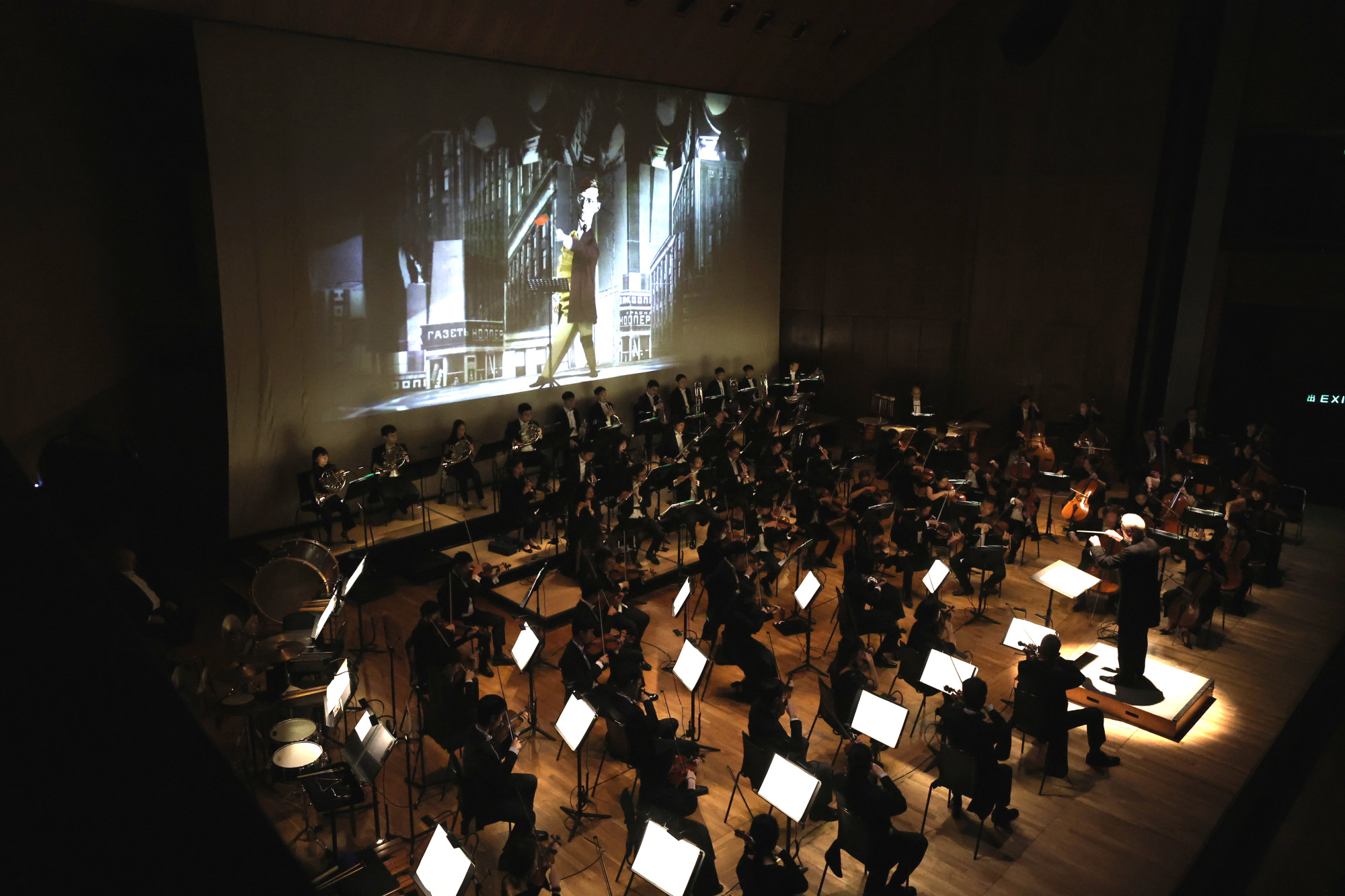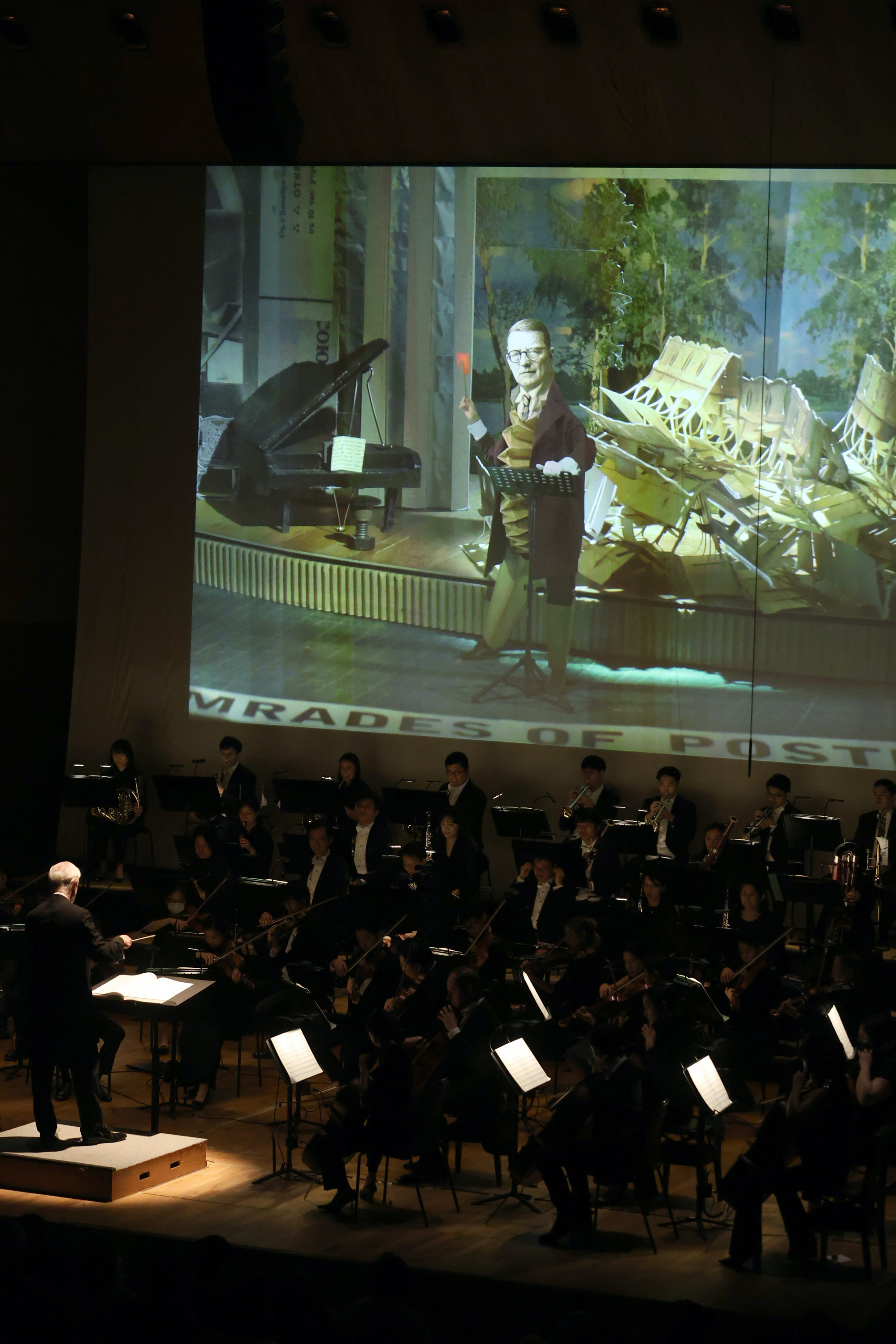
Review | Artistic inspiration versus propaganda: William Kentridge’s film to accompany Shostakovich’s 10th Symphony channels composer’s struggle with Stalinism
- A creative reaction by one artist to another, Oh, to Believe in Another World succeeds in illuminating the composer’s relationship with Soviet leader Stalin
- Kentridge’s film was inspired by Shostakovich’s Symphony No 10, and Hong Kong Sinfonietta under music director Christoph Poppen play it with nervous intensity
Technically speaking, it’s difficult to describe anything in William Kentridge’s Oh, to Believe in Another World, which closed Hong Kong’s New Vision Arts Festival, as “new”.
The same techniques employed throughout the film – collage, sculpture, puppetry, stop-motion animation and drawing (with much erasure and redrawing) – have been strongly identifiable characteristics of the artist’s career for decades.
So, too, has been Kentridge’s drawing of inspiration from classical music, particularly works for the voice.
His set designs for Mozart’s opera The Magic Flute and Shostakovich’s The Nose have become separate exhibitions in their own right. In his 2014 visualisation of Schubert’s song cycle Die Winterreise, Kentridge disregards the poems’ original story and setting, delving instead into his own childhood memories of South Africa, where he first heard these songs.
With Oh, to Believe in Another World, he chose a piece of music without words: Shostakovich’s Symphony No. 10 in E minor.

Commissioned and premiered by the Lucerne Symphony Orchestra in 2022 – and accompanied on November 18 and 19 by the Hong Kong Sinfonietta under its music director, Christoph Poppen – Oh, to Believe in Another World sets out to illuminate the complicated relationship between the composer and Soviet leader Joseph Stalin, spanning not just his tyrannical rule but the prelude to it and events after his death in 1953.
Kentridge’s free chronology is wholly in keeping with the composer’s piece, completed in 1953 but containing material written earlier “for the drawer” – not for public performance – which listeners could easily interpret as criticism of the Soviet system.

The film’s cast list stretches beyond Shostakovich and Stalin to include the poet Vladimir Mayakovsky, Lilya Brik and Elmira Nazirova (the lovers of Mayakovsky and Shostakovich respectively) in one camp with the composer, and Communist Party leaders Vladimir Lenin and Leon Trotsky with Stalin in the other.
Each of these figures floats through an idealised Soviet museum where artistic inspiration comes into conflict with revolutionary propaganda. Mayakovsky in particular becomes a narrative hook, present both visually as an animated puppet and through fragments of his poetry.
Sometimes the visuals take a direct cue from the music, as in the relationship between Shostakovich and Nazirova (both of whom are embedded in the score through recurring motifs fashioned from notes that represent the German spellings of their names).

At other times, Kentridge embraces the symphony as a sonic sandbox to build images entirely his own. One of his most powerful strokes comes though the elimination of political figures, artists and even ordinary people by suddenly smudging their faces in black ink. The surface looks like caviar, the aftertaste rather less enticing.
Musically, the evening fell somewhere between a true concert performance and a live soundtrack. Perhaps because there were intricate visuals involved, Poppen focused more on linear motion than in plumbing any given moment for multilayered meaning.
Rather than creating a polished surface, the performance unfolded through clearly delineated musical lines filled with a nervous intensity that came to a head during the second movement Scherzo.
The symphony concludes in an enigmatic danse macabre, channelling an impulse expressed less ambiguously in an earlier Hollywood classic as “Ding-Dong! The Witch is Dead” and winding up somewhere near the sentiment of a later rock anthem, “Meet the new boss, same as the old boss”.
Rather than an illustration of the music, the film is a creative reaction of one artist to another. Artist and composer do not always coincide, and although the gap between the two often lets in some additional light it doesn’t fully illuminate. That must surely be part of Kentridge’s intent. Making Shostakovich’s story perfectly clear would hardly be true to the composer.
Four stars out of five.
Asian Première of “Oh, To Believe In Another World”, New Vision Arts Festival, Hong Kong City Hall Concert Hall. Reviewed: November 18.
